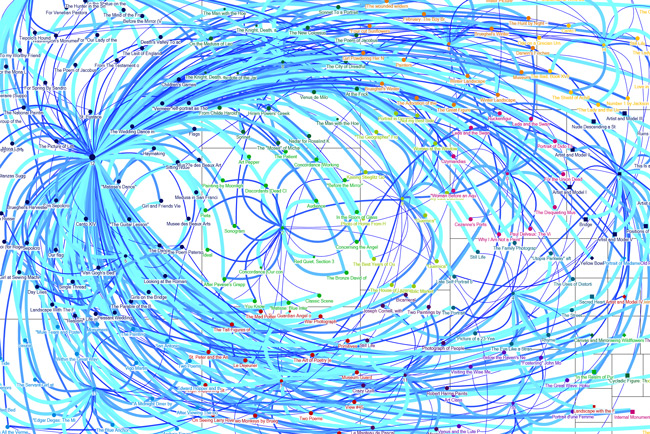
In this cross-disciplinary exchange, an evening of talks from academic, curatorial and creative perspectives, the Journal of Literary Translation (JOLT) expanded its rubric by exploring ekphrasis, the verbal representation of visual art. Dr Tom Walker from the School of English introduced ekphrasis as a literary mode. His talk was a useful guide to its literary and critical history. From Homer’s description of Hector’s shield in the Iliad as perhaps the earliest example of ekphrasis, to Keats’s meditative poem “Ode on a Grecian Urn” as a definitive example of the mode, to William Carlos Williams’s 20th-century response to a Brueghel painting in his poem “The Hunter in the Snow”, Walker gave a brief but comprehensive historical tour of ekphrastic literature, remaining fairly objective in his explanation. He did, however, leave the definition of ekphrasis fairly unresolved, which accommodated the varied following approaches by Janet McClean of the National Gallery of Ireland and the Cave Painting project.
McClean spoke about her 2014 book and exhibition for the National Gallery, “Lines of Vision: Irish Writers on Art”, to mark the gallery’s 150th anniversary. Offering what she called a more “human perspective” on the verbal response to visual art, McClean provided a fascinating insight into the creative responses to the gallery’s artwork by 56 of Ireland’s greatest contemporary writers and poets, including Paula Meehan, Frank McGuinness, and Colm Tóibín. Responses, both in poetry and prose, ranged from the deeply personal to the purely aesthetic, many paintings evoking memories of childhood, or a particular person or time. Particularly poignant was the fact that Seamus Heaney’s poetic response to Gustave Caillebotte’s 1872 painting, “Banks of a Canal, Near Naples”, was one of the last poems he ever wrote. In its representation of a small island that is home to so many writers, it seemed natural to McClean that the National Gallery should look at art from a writer’s perspective, and if anyone in attendance didn’t catch Lines of Vision last year, McClean certainly compelled them to read the exhibition’s accompanying book.
The event also showcased the Cave Paintings project, which, as well as being Dublin’s most recent verbal–visual venture, is a platform for young writers and visual artists to work together. Ten pairs of writers and artists produced collaborative – yet separate – responses to each other’s work and ideas. Participants in the project, Anna Walsh, Aaron Smyth and D Joyce Ahearne, spoke candidly about the processes behind their collaborations, and gave a couple of readings. The Cave Paintings project’s approach to mutually responsive mediums, as opposed to the one-sided literary response to the visual, led to an ultimately open-ended consideration of what the term ekphrasis can potentially encompass.






